Getting to Wadi Musa a.k.a Petra is easy, unlike how I got there going back to Aqaba first was my fault for being lazy. Like I mentioned in my post on Aqaba, getting around Jordan is very easy; so, I should have gone straight to Petra from Wadi Rum at a cost of about 5-7 Dinar – I don’t know the exact prices as I didn’t use it, but the bus from Aqaba central to Petra cost 7 Dinar and drops you off near the middle of Wadi Musa. Wadi Musa is small so unless you are outside of the town centre you can walk to 95% of the hotels/motels.
Wadi Musa, the ancient and historical site
Literally means “Valley of Moses”, which is famously known as the location of Petra; Petra is part of the town Wadi Musa. It is said that Wadi Musa is where Moses made water appear from the rock when he struck it whilst passing through the valley at Ain Musa (“Moses’ water spring” or “Moses’ Well”). The whole of Jordan as I learnt along the way is steeped in Christian and Muslim theology and there are plenty of Christian and Muslim pilgrims that travel throughout the country to the many religious sites.
I stayed in the heart of the village, that’s not saying much it is very small; there are only a handful of restaurants but enough to get you through and the food as a whole was good, I only ate at three places – there are obviously more, but only a few. My hotel, My Home Petra Hotel is owed by Issaam, a native to Petra and knows the place back to front! I think the name of the hotel gives away the type of place that it is and Issaam treats you like family. A few nights per week he also cooks a huge meal which feels like a massive family dinner, the food was delicious and cheaper than any restaurant. Quite a humble place with everything you need in a clean environment, if I every get to go back I won’t look any further for accommodation. If anyone does go there I’d recommend it highly and before planning what you plan to do and when at Petra speak to Issaam as he knows the best routes to match anyone’s stay duration in Petra.
An extra bonus of My Home Petra Hotel is that Issaam will drop people off at the entrance of Petra every day and pick up too (any time either direction). I didn’t think this would be necessary when I got there as I’m used to walking many kilometers per day, however a ride back up the hill into town after a day of walking in the sun and climbing thousands (literally) of stairs is a luxury I’d have paid for and is just part of Issaam’s normal service which I gladly used every day of my 3 days!
I’ve said a few times previously my reason for going to Jordan was to see Petra, so far, my plans had already changed because Jordan has so much more to offer than I knew of and would keep on doing so! I shamefully admit I had no idea Petra was even a tenth of its size, my expectation was to see the Siq, Treasury and assumed there would be a few other sites to see too. My decision to stay there for three days was to give me one day to see the sites, a backup half-day in case I wanted some extra time maybe to get a few good pictures with the remaining 1.5 days to make plans on my next destination, Amman, and how to get there. Well, thanks to the buses getting to Amman was easy, but…I used to whole three days to see as much of Petra as possible, my regret is that I should have stayed another day!
I’m not procrastinating on telling about my time in Petra, oh no, that will come, and with so many amazing sites I’m surprised my finger didn’t get RSI as it clicked away on my camera hundreds of times! What makes Petra one of the best archaeological/ancient sites in my opinion is that you have access to so much of it. You can see loads in a day or days, you can walk as little or as much as you like as it caters for everyone age &/or fitness. There are paths to walk, hike and climb; the place gives you near unfettered access (within reason) to the whole area whilst they still preserve and protect it for future generations – I fine balance which could be argued both ways. I don’t mean they give you carte blanche to go anywhere and do anything, there are just so may routes and paths within the area that it gives you a real opportunity to explore Petra more so than other historical sites I’ve been to.
I arrived late afternoon so site seeing wasn’t an option nor had I planned anything as I would have three full days there. After my usual reconnaissance of the area, it only took me 20 minutes, yes, that’s how small the town centre is, I got some dinner and had a chat with Issaam about my plans for my time there – we agreed that he’d give me a plan the next morning.
Nice breakfast and I reluctantly agreed to by a lunch bag from Issaam for 5 dinars; it would save me time from looking about and I thought it would be a nice thing to do as a friendly gesture. Petra is no different to almost all tourist sites, anything sold in or near it costs more which Issaam didn’t’ hasten to remind me; at first I wasn’t sure if he was doing a “sales” pitch to buy from him, turned out he wasn’t, and I bought my lunch bag from him all three days. Even if you don’t stay at My Home Petra Hotel I’d highly recommend you by any snacks and water in the town and not inside Petra!
Petra, so much more than just the Siq, Treasury and Monastery
I had kept my entrance ticket to Petra for near 2 months and when I finally got started on this blog piece I couldn’t find it GRRRRR! If you are going to visit Petra for more than one day you can get a multi-day pass which is much cheaper; the more days, then proportionally it gets even cheaper. I think (wouldn’t have to if I hadn’t lost my ticket!) my pass 3-day pass was either 50 or 60 Dinar.
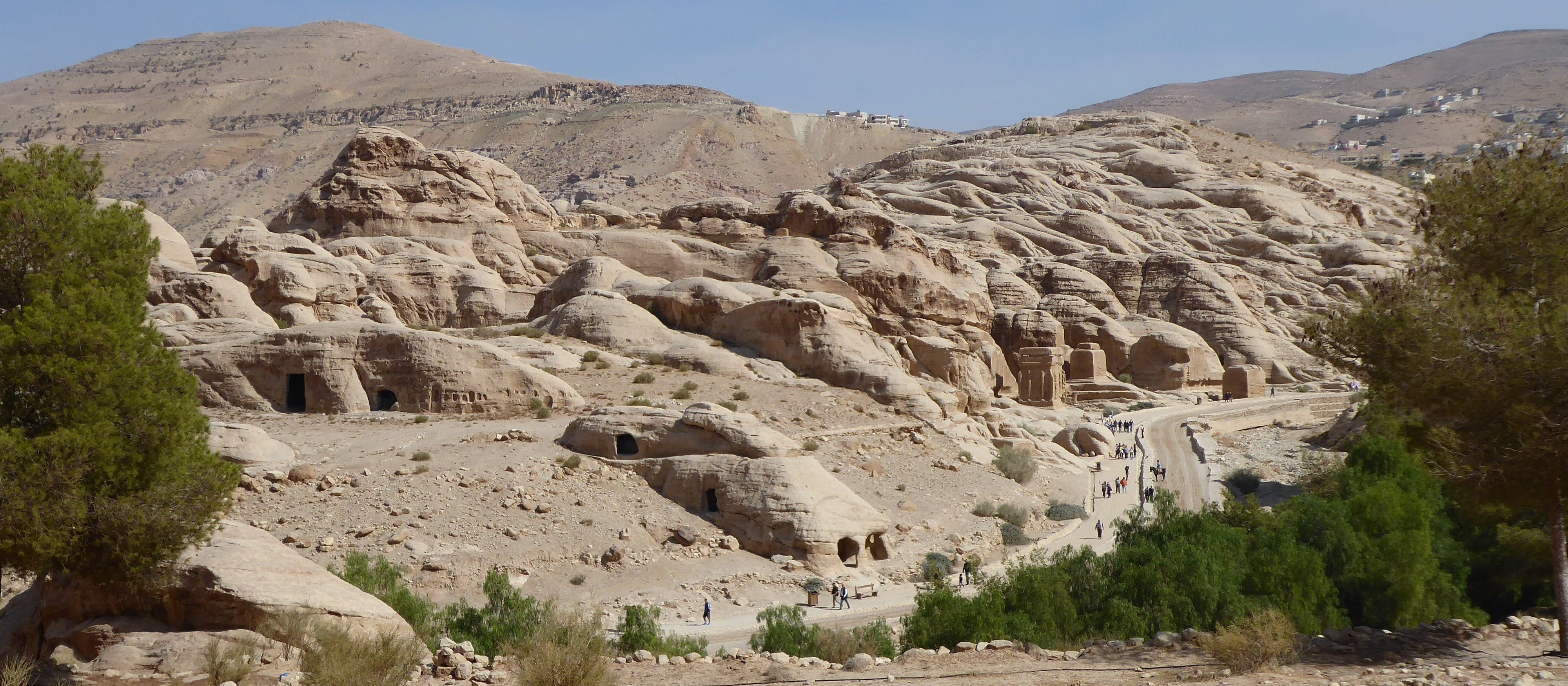
NB. If you don’t want to get caught in masses of tourists especially in the Siq and at the Treasury then I cannot recommend highly enough that you go early, the early the better. This helps for a few reasons; 1. The atmosphere in the Siq is very different when there is little to no people hustling and bustling through, the silences adds a dimension to the environment, 2. It’s not irritating having to dodge people especially if you are stuck behind a large travel group. Do not underestimate how busy it can get, thousands of people visit every day.
After the entrance you walk down a purpose made road/path of sand and stone, wide enough for a car to drive down with an additional separate road on the left for horses and horse drawn carriages. At the start of the path there are plenty of touts, (the first and only place that reminded me of Cairo and Giza) pushing rides down to the Siq &/or Treasury; their sales pitch is that the ride is included in your ticket, it’s not! FYI – the ticket tells you the types of transport there is, but it is definitely not part of the ticket price.
Djinn Blocks
I thought I’d have to wait until the Siq before seeing anything, I was wrong. The walk down the road is dusty and barren but before you even get to the Siq there are Djinn Blocks on the right, Snake Tomb and Obelisk Tomb on your left. Not much is known about the Djinn Blocks, when they were built or why. Many people think they are either part of a tomb which wasn’t finished or as a representation of the Nabataean god Dushara – I think the latter is more plausible because the Djinn Blocks don’t resemble any of the other tombs (in my opinion) in the area.

Obelisk Tomb
As for the Obelisk Tomb, this is on top of what was a banqueting hall called a triclinium; the four pyramid shaped obelisks as said to represent the five people buried in the tomb, yes 5, the fifth person is/was represented by a figure statue that is just about worn away in the middle. The triclinium below is much older than the tombs and was probably used in celebratory festivals to commemorate the dead. There are a few triclinium in Petra which span over hundreds of years, I’ll try include them later in this post.

Quite honestly I would have been impressed if these were all I had seen, the effort it would have taken and the detail they would have displayed when they were shaped must have been impressive; I used the word “shaped” intentionally because as with almost the entire Petra everything was shaped out of the rock &/or mountains. They took what the land had on offer and shaped it to fulfil their purpose whether that be housing, temples, tombs or administrative structures, it reminded me of the Noble Tombs in Aswan and Hatshepsut’s mortuary temple only here the Nabataean’s created a whole city cut into the rock and mountains. I was soon to see mountains carved on an epic scale!
The Siq
The Siq is a snapshot in time of what nature has taken thousands of years to create; a split in the rock now worn down through natural erosion to create a cavern that spans a few hundred metres. There is so much history before, in and after the Siq that it’s not a topic I could possible get into without doing a thesis. What can be said about the Siq is that mother nature created a passageway of beauty, with lines and curves cutting through the stone to reveal various shades that change throughout the day as the sun moves across the sky. Some parts open up like an amphitheatre, others close up above with only a few metres apart at the top creating a solemn reflective ambiance.
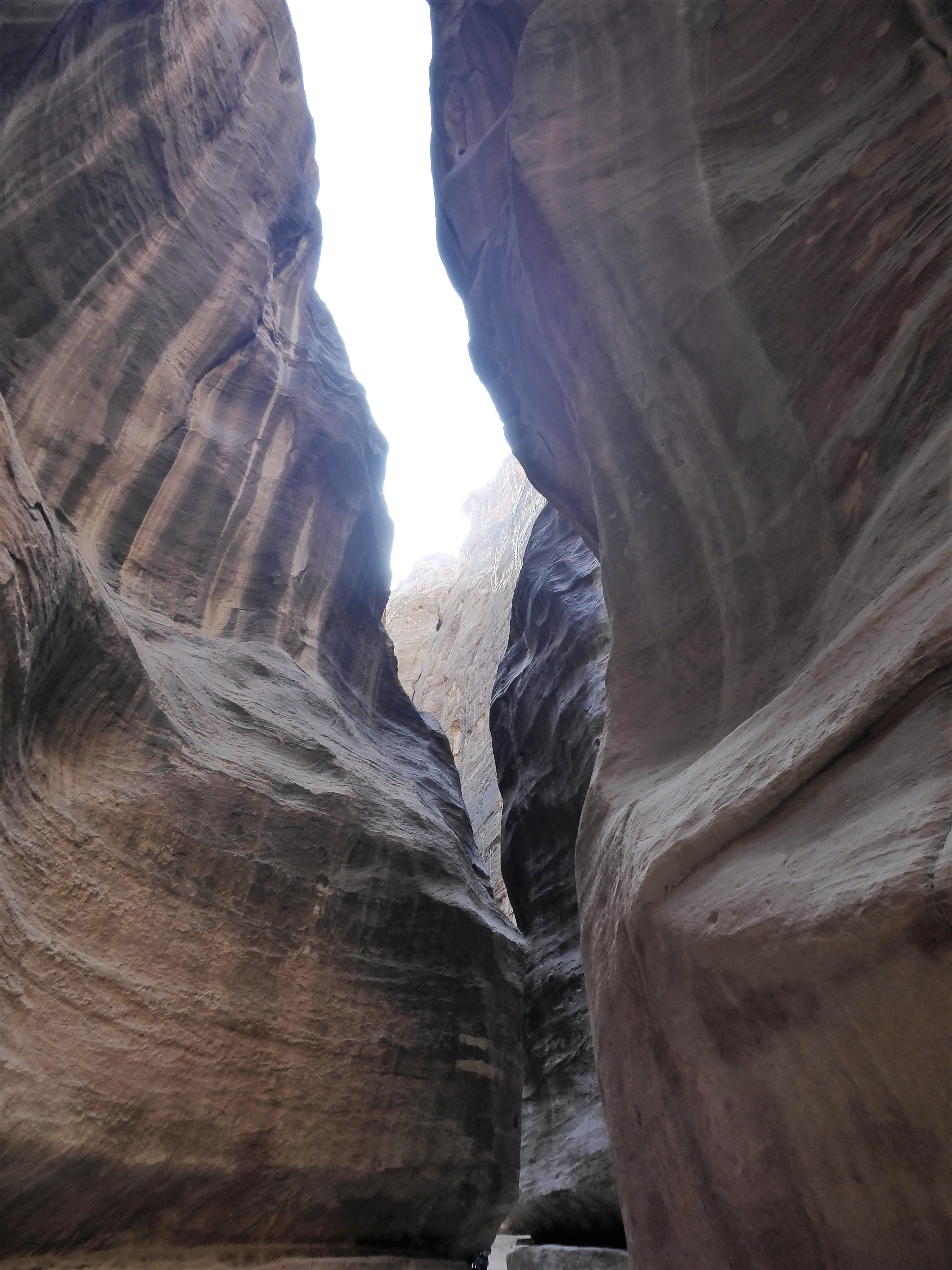

The floor at present is between 2-3 metres higher than when Petra was occupied, the Siq is mesmerising as is and around 1.5km long, it would have been even more stunning 2000 years ago and would have intimidated any foreigner entering it I’m sure!
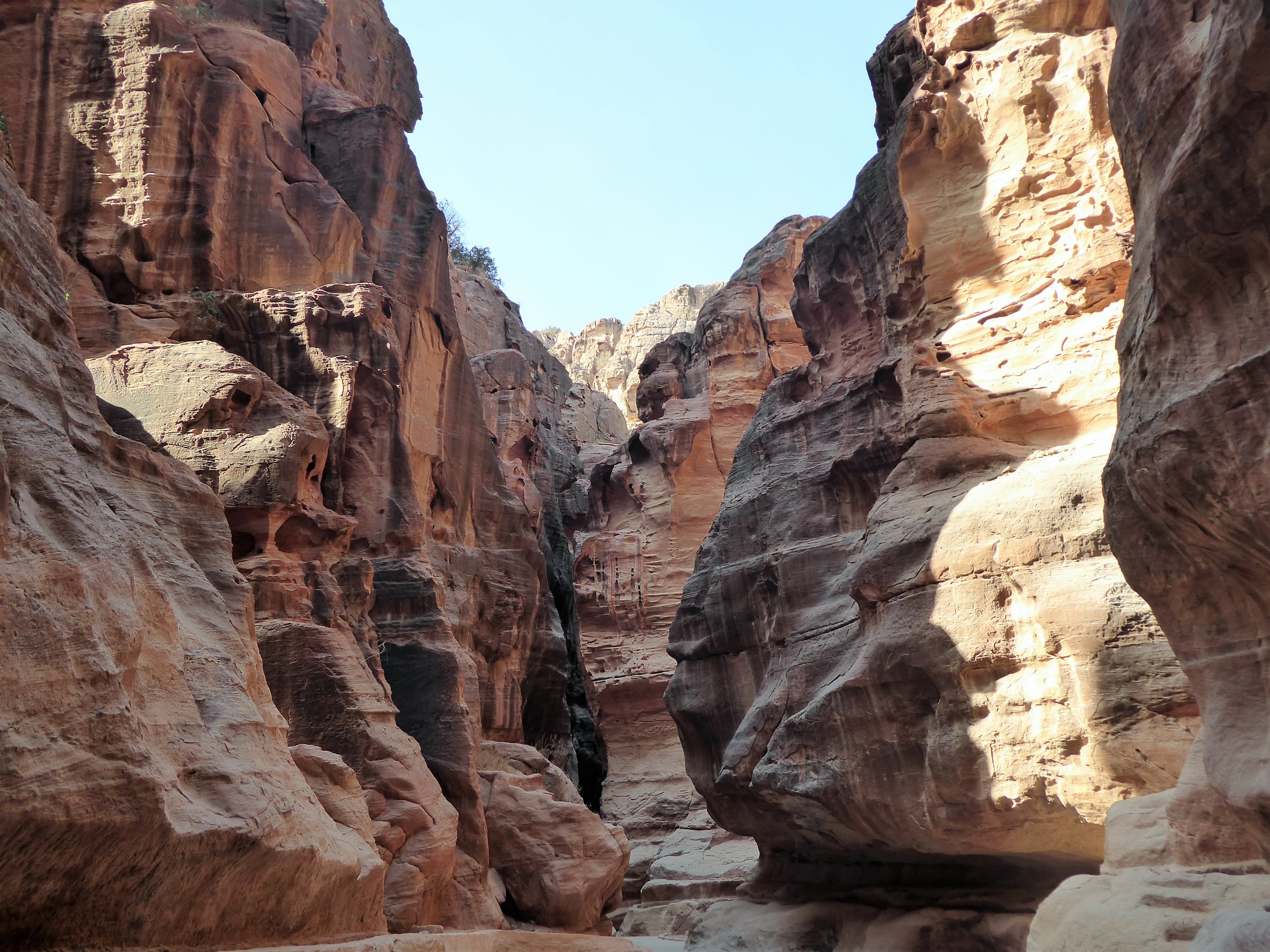
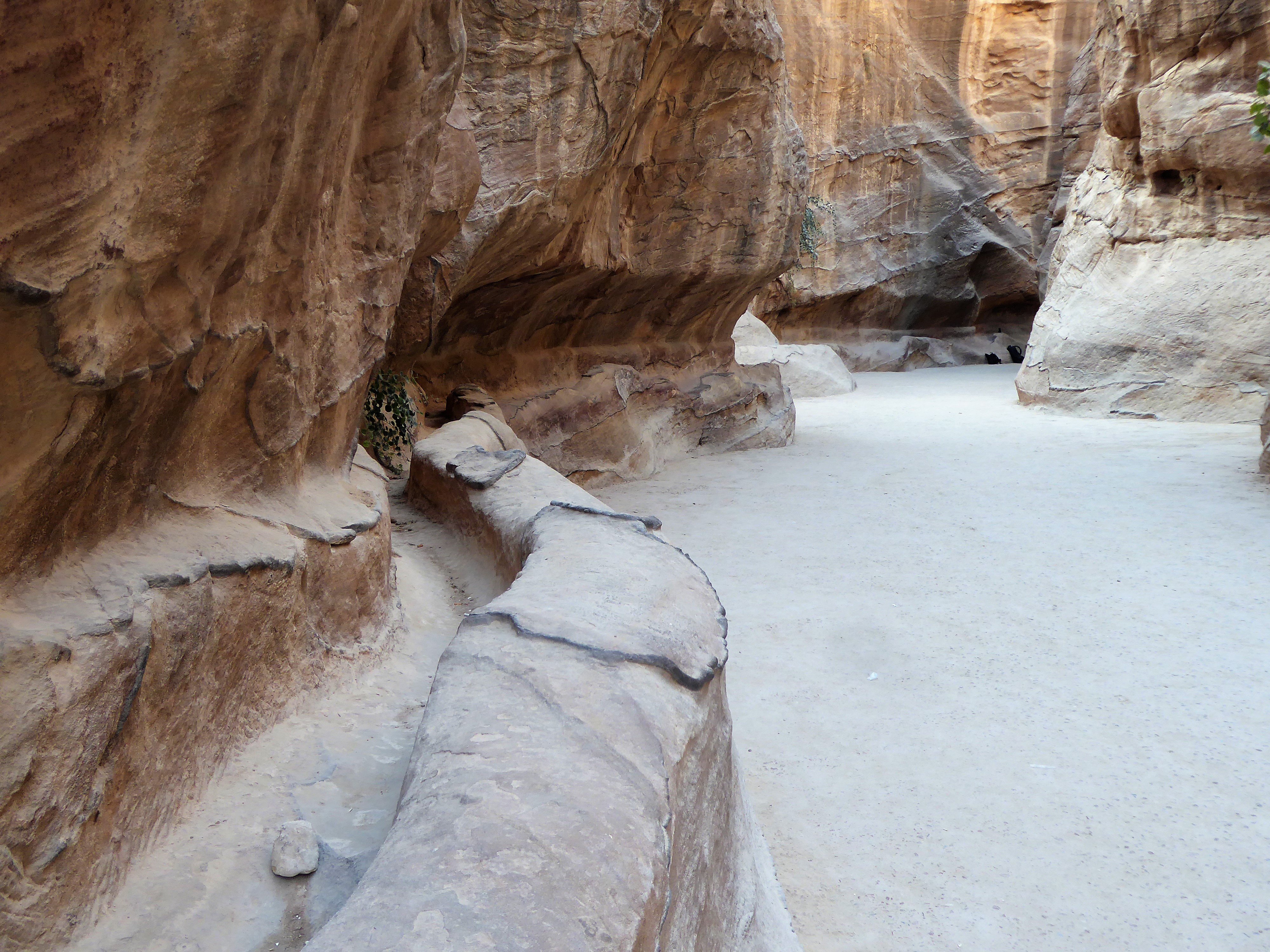
Another glimpse inside the Siq of why Petra is so impressive was their ability to control the water in the area. The guttering in the Siq cut into the mountain runs for over 100 meters was only to be a fraction of the ingenuity I would see in Petra. The walk through the Siq is quite (if you leave early) and creates a stage for what is next to come, walking through ever darkening passages, till….
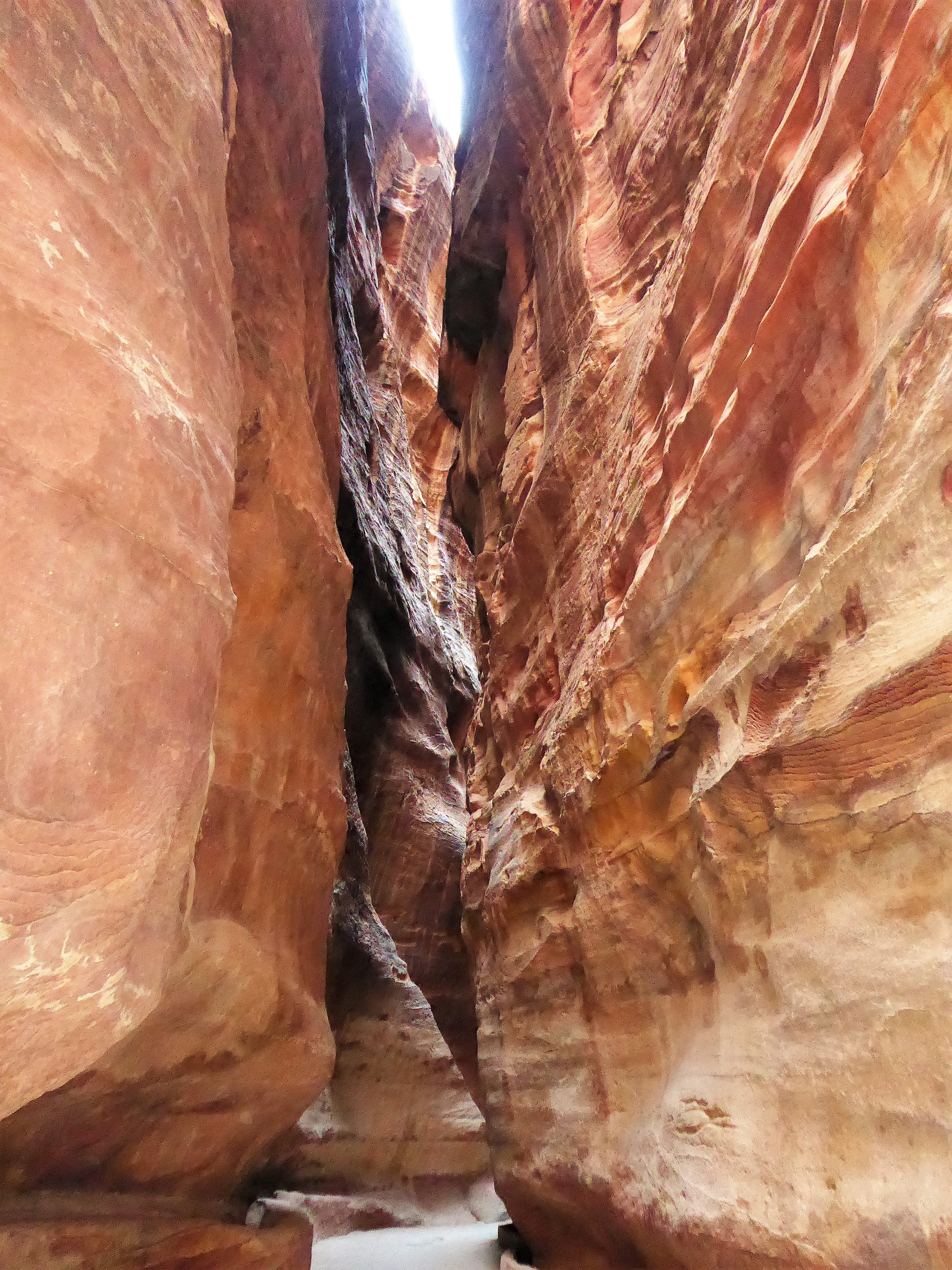
The Treasury / Al-Khazneh
…and just like the movies the Siq goes dark, up ahead a shard of light at the end beams down making you adjust your eyes, then a portion of The Treasury comes into focus glowing with a red-pink hue. As you walk closer the size and magnitude becomes even more impressive and as Indiana Jones is one of my favourite movies (a mixture of adventure and archaeology, what’s not to like!) I couldn’t help but think of the movie as I got closer – WOW, a major tick off of my bucket list!
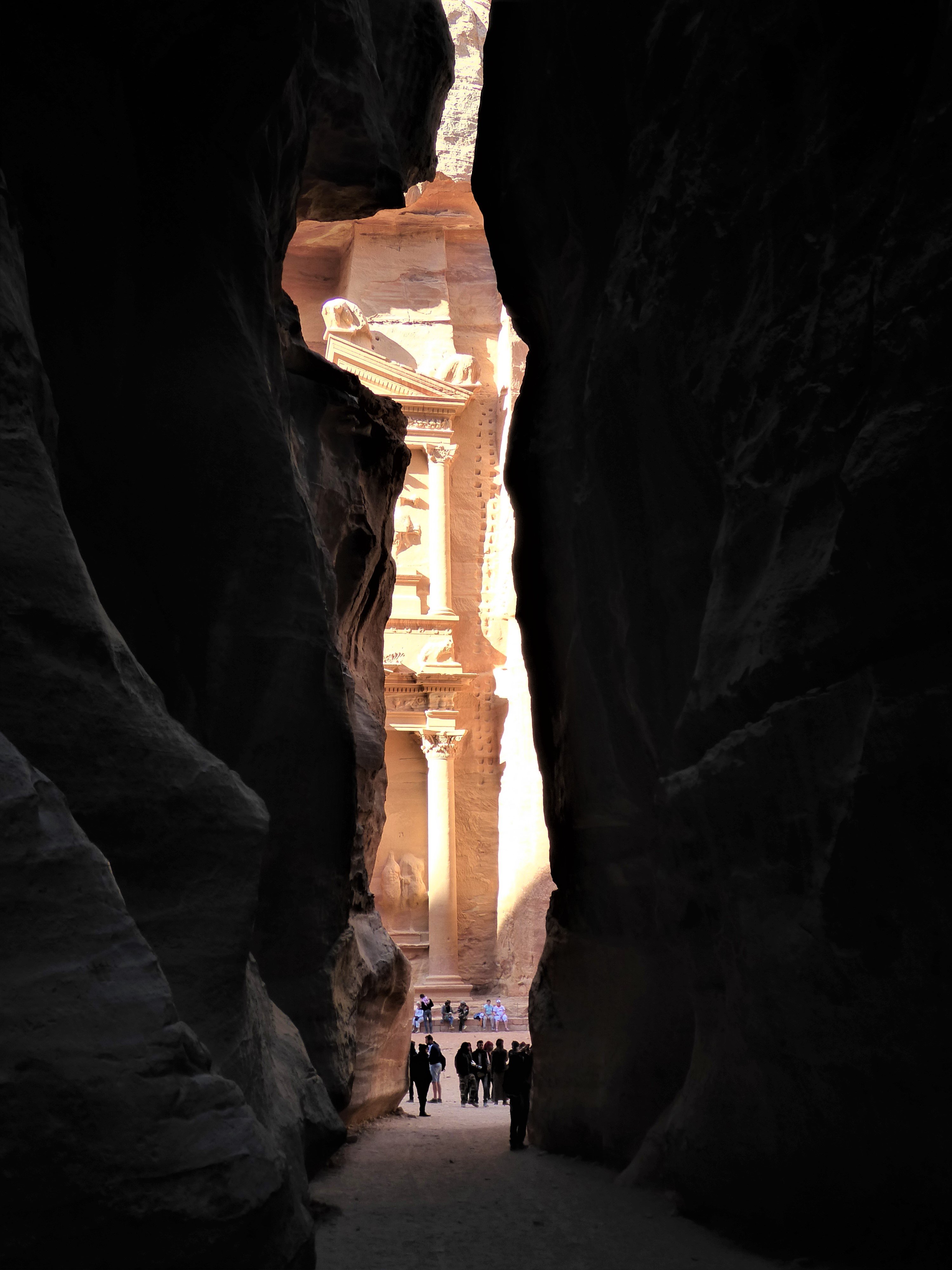
The Nabataeans cut these structures from the top down, standing near you can still see construction marks like stairs or scaffolding niches. The task of building this is beyond impressive; reshaping a mountain face on this scale really is quite spectacular, and special. Just like the rest of Petra the exact nature of this façade isn’t known, likely it was a tomb of sort for someone very prestigious, it could also have been a temple afterwards.
Its name in Arabic Al-Khazneh translates to The Treasury, but the structure has nothing to do with treasury. This name came about through urban legends that treasure was stored inside the tomb or in the urn high up on the façade – there a plenty of bullet marks on the earn from people shooting at it in the hope to break it open and reveal the treasure hidden within.
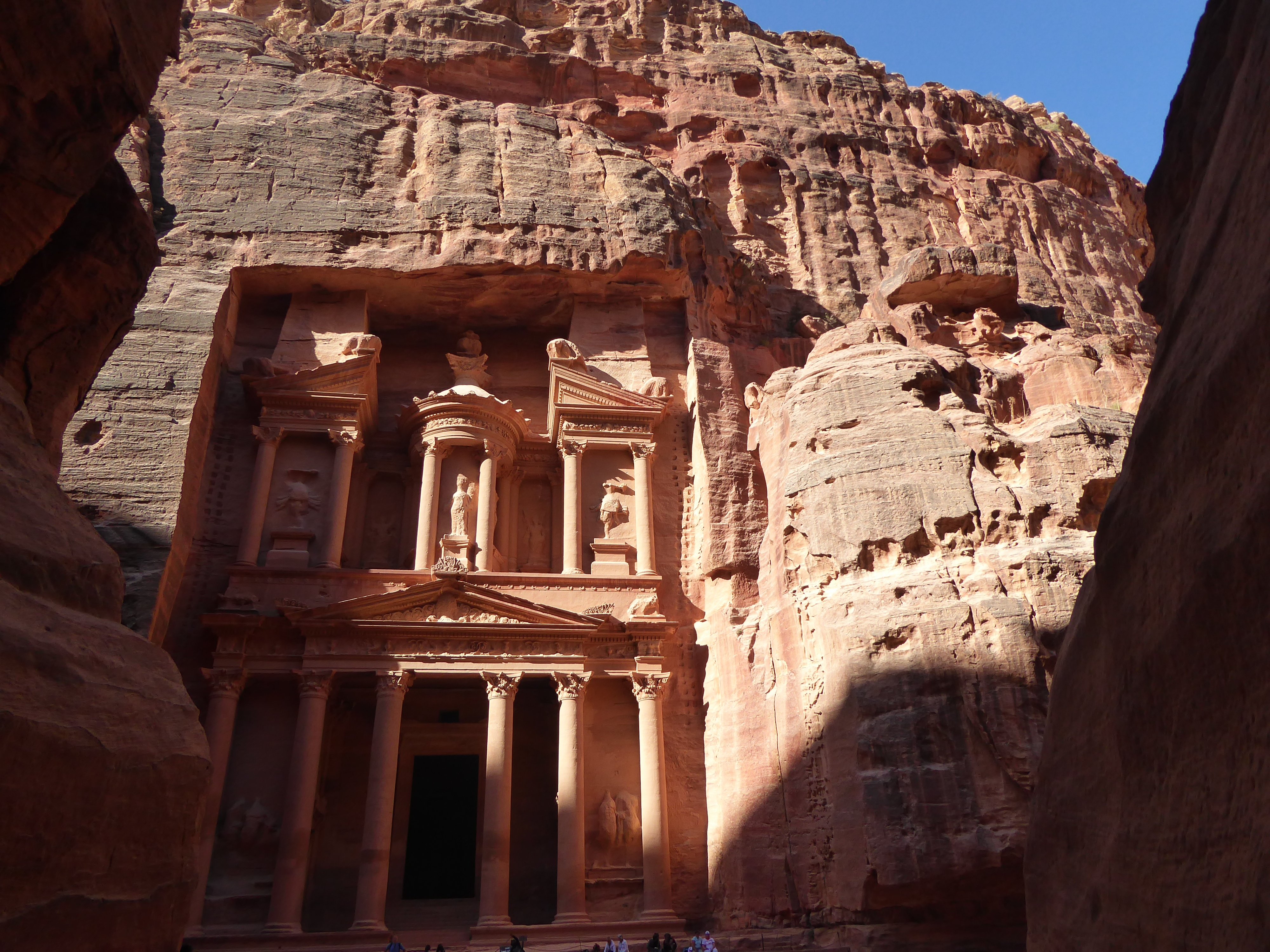
The Treasury was built somewhere between 1BC – 1AD, the decorations tend to infer nearer 1 AD during the reign of Aretas IV Philopatris. Now badly eroded you can see extensive restoration work has been done, and now you cannot go inside the 12 square meter chamber. The façade, although partially restored is still badly worn, but you can still see how ornamental the decoration was with mythological figures. On top are four eagles to take to soul to the afterlife, there are Amazons with axes and twin statues of Castor and Pollux. This mix of mythology is throughout Petra as the area was occupied for a thousand year from native Nabataeans, Greeks, Romans, Crusaders and Moors.
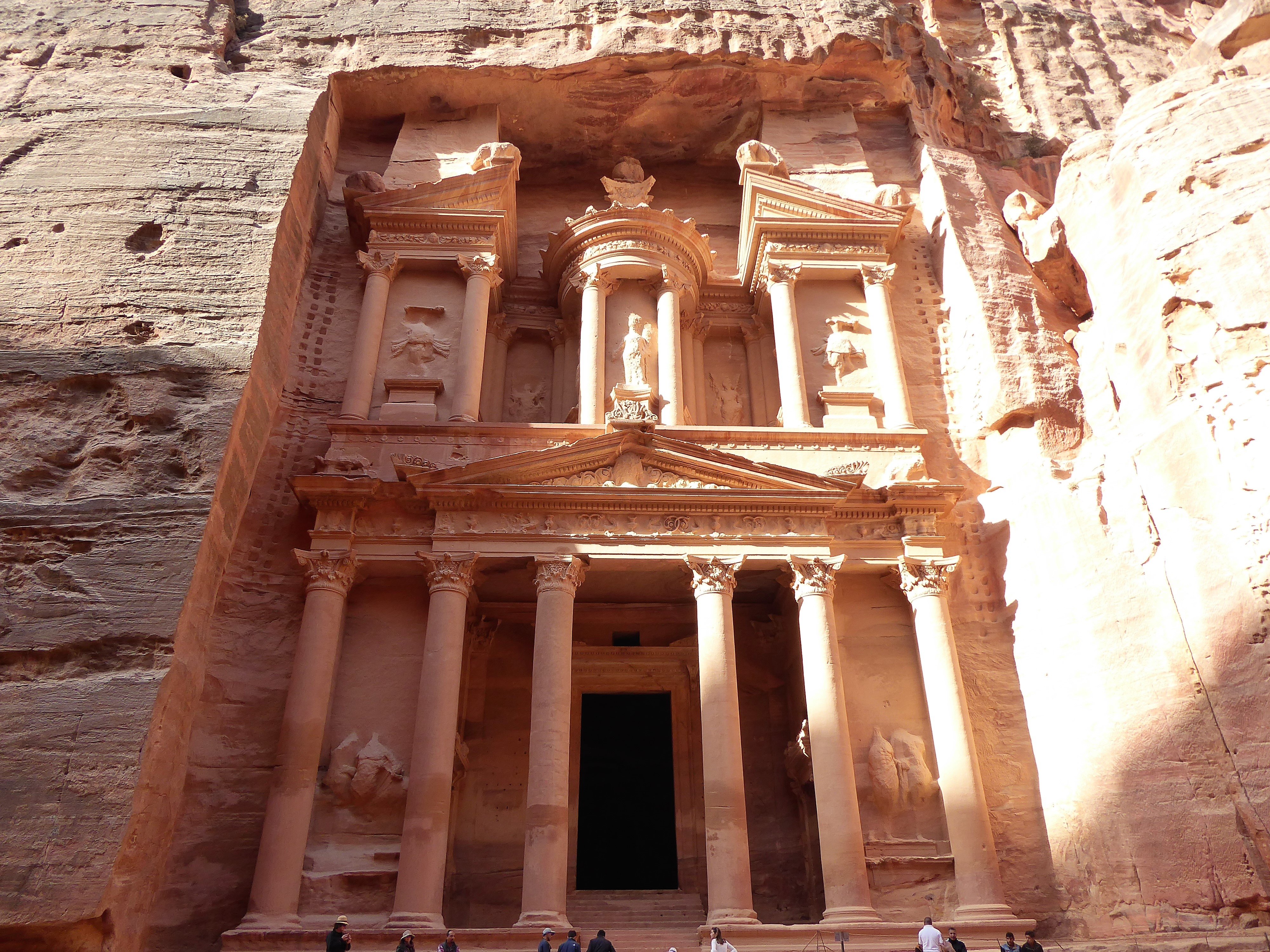
Jumping back to an earlier remark I made about procrastination, hmmm I wasn’t really truthful; I’ve delayed writing about Petra more than any other post, just because I had no idea what to say, how to say it or even how much – the place really did blow me away. So, finally getting into writing about it started in Dubai, now I’m in Bangkok and I hope I’m now getting back into a rhythm of writing and having more confidence to do so too. The latter comment I may get into in my diary.
So, Part 1 of Petra is done, I have no idea how many parts it will have we’ll just have to wait and see. If you are in the slightest way impressed by the pictures (not my photography) then you’ll be even more so with the rest of the pics on Petra in Part2, 3, 4…who knows ? Oh yes…a lot more pictures than this intro post

One Reply to “Wadi Musa, Petra – Amazed, blew me away”
Comments are closed.